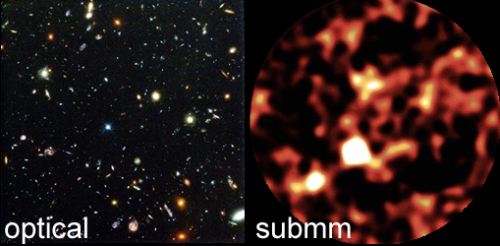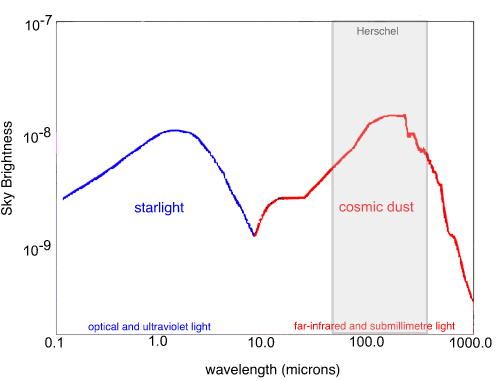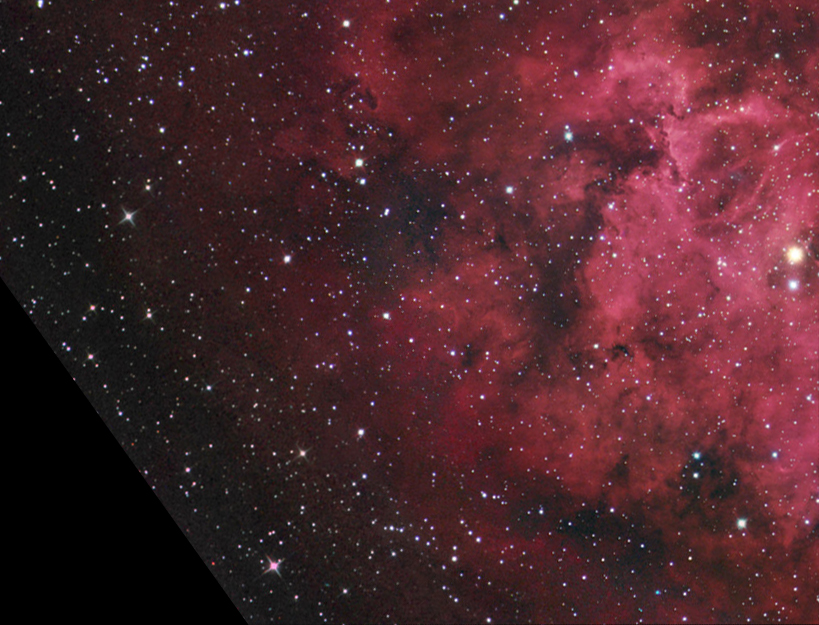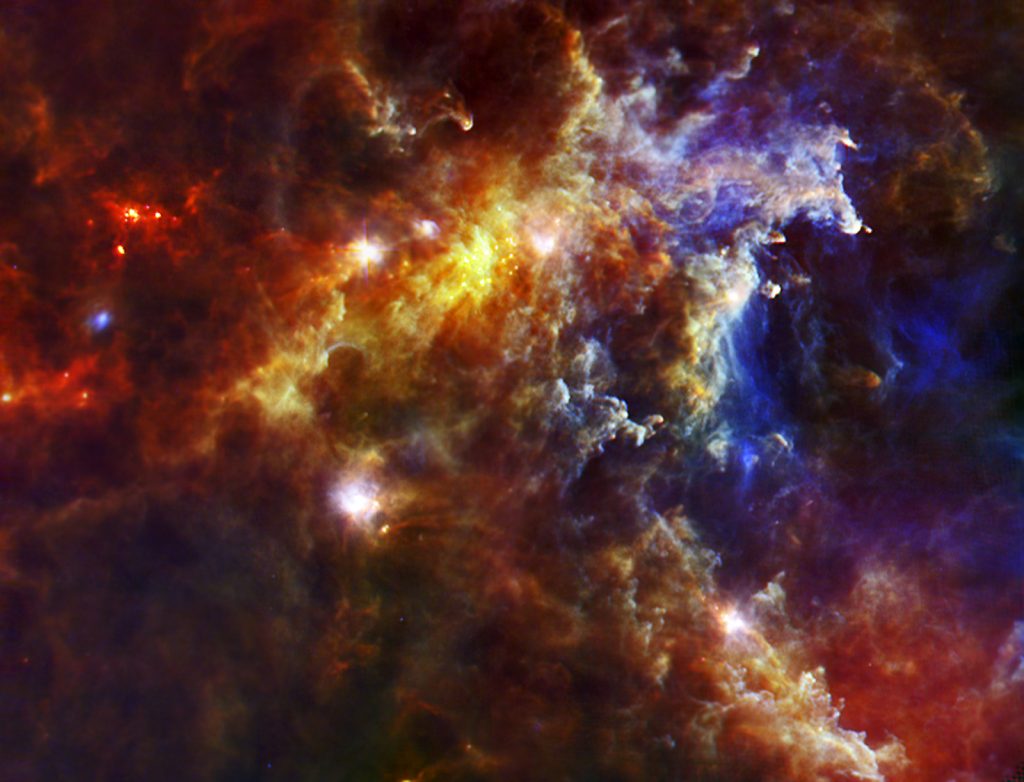Revealing the Hidden Universe
Today, galaxies fill the Universe. They are distributed in curved walls surrounding huge areas of emptiness – like bubbles in a foam bath. Each galaxy contains several hundred billion stars. However, it has not always been like this. There was a time when galaxies simply did not exist. Astronomers have long been asking: when did galaxies form, how did they form, were the first galaxies like those we see now?
In 1996, the Hubble Space Telescope released a picture which revolutionized astronomy. This picture, mankind’s deepest and most detailed optical view of the Universe, is known as the Hubble Deep Field (HDF) and is shown on the left below. There are thousands of galaxies in this picture, some of them the faintest and most distant objects in the Universe. However, this isn’t the whole picture. We are missing the galaxies which are hidden by lots of dust.

Work with previous infrared and submillimetre telescopes showed that only a few billion years after the Big Bang there were lots of dusty galaxies that are so hidden by dust that they can barely be seen by optical telescopes. At the moment, it seems quite likely that these galaxies are the ancestors of elliptical-shaped galaxies we see around us today. The image on the right shows the SCUBA ‘deep field’. This is the submillimetre view of the Hubble Deep field, the dusty view of the Universe. There are far fewer galaxies (seen as white blobs) in this sub-mm image than in the optical one above but these few galaxies alone are responsible for around a third of the total optical light in the Hubble picture.
The amount of stars being born in these dusty galaxies is between 100 – 1000 times more than what we see in optical galaxies. Herschel will make important discoveries in this area. All the previous submillimetre telescopes combined have detected a few hundred sources whereas the Herschel satellite will be able to detect tens of thousands of sources.
Star Formation
It’s not just distant galaxies which are hidden from view by dust. In our own galaxies, clouds of dust hide huge numbers of stars forming within. When viewed in the far-nfrared, this dust is seen to glow as it is heated by the young stars within. These processes can only be observed by looking at far-infrared and sub-mm. The image on the left shows the Rosette Nebula in visible light, as imaged by Rob Gendler, while the image on the right shows the same area of sky as seen by Herschel in the far-infrared.
The Infrared Glow
The extragalactic background is made up of radiation from distant objects beyond our own Milky Way. All the visible light from stars is plotted below in the graph as the blue line. The infrared glow produced by cosmic dust which has been warmed by all the stars since the beginning of time is shown in red.

Detecting the infrared background is not easy. We have to get rid of all the infrared heat on Earth and in our own Galaxy. This is a bit like turning off the lights in your bedroom and finding that the walls, floor and ceiling are glowing! Unfortunately, we cannot turn the lights in the Galaxy off!
This ‘background glow’ of the Universe tells us the total amount of energy released by stars. But this reveals a very surprising result: the amount of energy radiated by stars and dust is almost the same. Since the dust is recycled starlight, this means that cosmic dust is responsible for blocking almost half of all the optical light given off by stars and galaxies since the Big Bang.
This really highlights why it is important to study astronomy in the infrared and submillimetre. Otherwise, we’re only seeing half of the picture.


